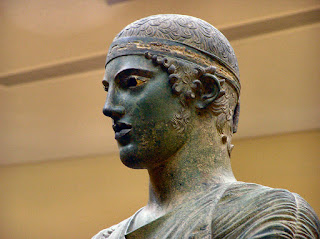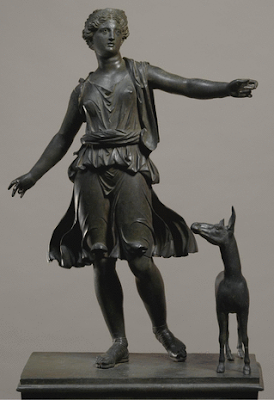 | Dated to around 330 BC, the Boxer at Rest is a Hellenistic Greek sculpture of a sitting nude boxer, still wearing his caestus, a type of leather hand-wrap, in the collection of the National Museum of Rome.
|
 | The over-lifesize "Dancing Satyr" of Mazara del Vallo is a Greek bronze statue recovered from the sea floor at a depth of 500m (1600 ft.) off the southwestern coast of Sicily in 1998. The satyr is depicted in mid-leap, head thrown back ecstatically and back arched, his hair swinging with the movement of his head. The figure is highly refined; the whites of his eyes are inlays of white alabaster. |  |
 | Alexander the Great on Horseback, 100-1 B.C., bronze and silver. |  Victorious Athlete, "Getty Bronze" 300-100 B.C. Victorious Athlete, "Getty Bronze" 300-100 B.C. |
 | They are the 2,500 year-old Riace Bronzes - a pair of towering statues of naked Greek warriors. With their muscles, thick beards and manes of curling hair they are extraordinarily life-like. Their teeth are made of gleaming silver. Copper gives their lips and nipples a reddish tinge, and glass and ivory were used for their eyes. |  |



 This bronze was found in his tomb.
This bronze was found in his tomb.
 “The Medici Riccardi Horse” About 350 B.C. Italian Bronze and gold.
“The Medici Riccardi Horse” About 350 B.C. Italian Bronze and gold.




No comments:
Post a Comment